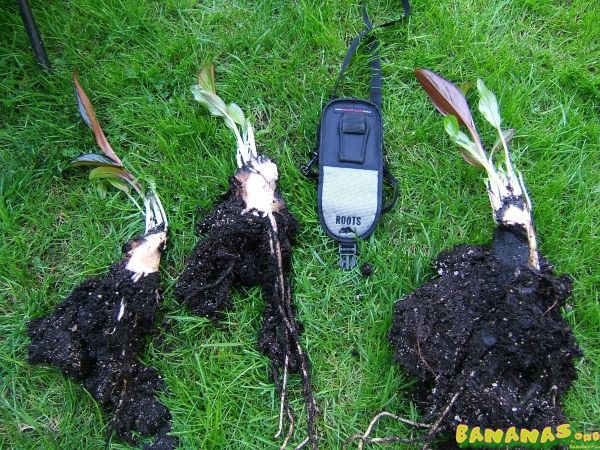Ensete ventricosum 'Maurelii'
From Bananas Wiki
Contents |
Cultivar Name
Ensete Ventricosum 'Maurelii'
Synonyms
Red Abyssinian banana, Musa 'Tandarra Red'
Pictures
(credit the flying dutchman)
(credit banananana)
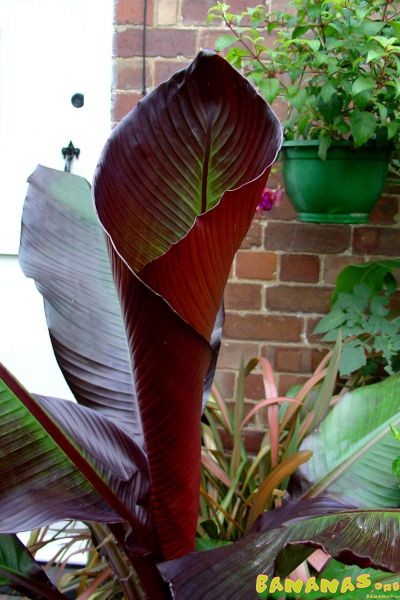
(credit banananana)

(credit jmilligan1976)
http://www.bananas.org/gallery/showphoto.php?photo=2532&ppuser=568  ]
]
(credit Inoneear)

(credit Inoneear)
(credit Inoneear)
(credit Inoneear)
(credit Inoneear)

(credit Gabe15)
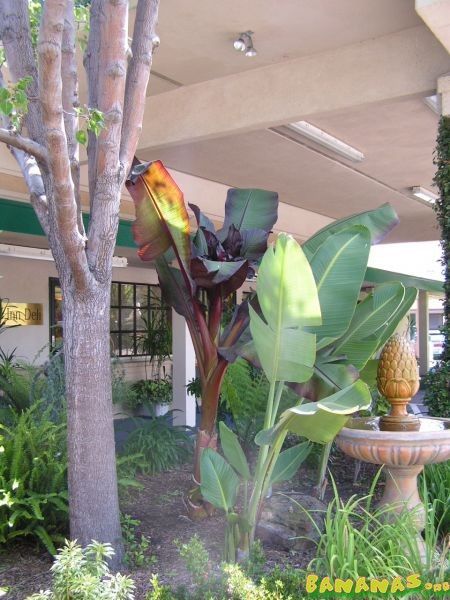
(credit Gabe15)
(credit Dombo)
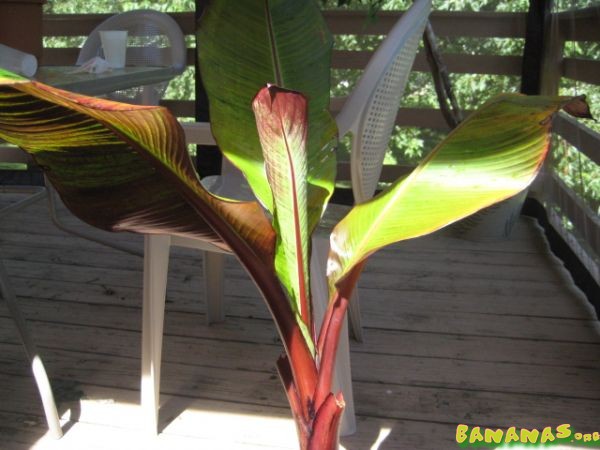
(credit steven)
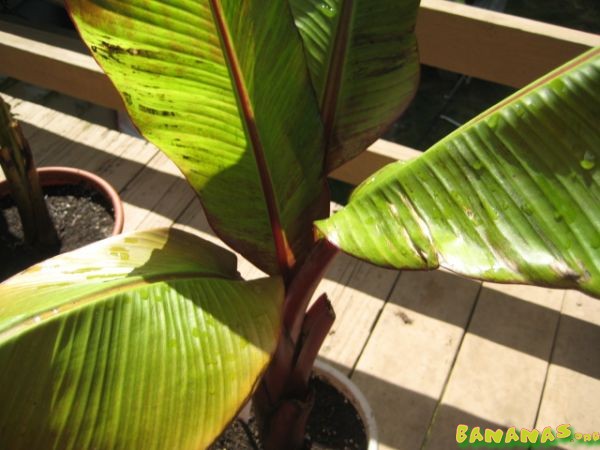
(credit steven)
Description
Botanical Name: Ensete ventricosum 'Maurelii' (en-SET-ay ven-tri-KO-sum) also known under the common names of False Banana, Red Abyssinian Banana, Red Leaved Banana, Wild Banana Ensete Ventricosum belongs to the family Musaceae,genus Ensete. There are approximately 7 species in this genus. The wild form of Ensete ventricosum is widespread in tropical Africa from Ethiopia, through Kenya, Uganda and Tanzania south to Mozambique and South Africa (Transvaal), and west to the Democratic Republic of Congo. Ensete is cultivated for food only in Ethiopia, where it was first domesticated possibly about 8000 years ago. The center of Ensete cultivation is in the mountains of south-western Ethiopia. Ensete Ventricosum 'Maurelii' is a banana-like perennial has large paddle-shaped leaves, that range in color from deep claret brown to red-purple to pale green, produced from the center of the plant, having thick midribs with bright red undersides. White flowers are borne in inflorescences 3 to 4 feet long. Fruits are banana-like but dry and unpalatable. At maturity in approximately 5 years, they can reach heights of up to 30 feet, but are more likely to grow to approximately 20ft. Ventricosum are grown primarily for the food value of their corms in their country of origin (Ethiopia). The corm being a rich source of high-grade food starches reaching a mature weight of approximately 40 kg. In Europe and most of the western world this species is grown as an ornamental. Ensete ventricosum 'Maurelii' is a sport of the normal green Ensete ventricosum not a distinct or separate species. To reproduce it must be either tissue cultured or the corm must be divided to produce the red offspring. It does not normally grow true-to-type from seed the offspring of the seed will most likely be of the common green variety. However, they can produce red offspring from seed but the chances are 1 in 10,000.
- Genetic Group -
Chromosome number 2n = 18
Origin
Africa from Ethiopia, through Kenya, Uganda and Tanzania south to Mozambique and South Africa (Transvaal), and west to the Democratic Republic of Congo.
- Date realized in trade -
first cataloged: Musa ventricosum Welw. (1859)
Usage
Grown as a food and ornamental crop
Flowering
- Time To Bloom -
5 years
- Time To Harvest -
5 years
Cultivation
- Mature Height - 6'-10', 20'
- Survival Zone -9-11
- Fruiting Zone - 9-11
- Cold Hardiness -9
- Wind - moderate
- Sun - lots of sun
- Taste Description - N/A, however the corm has been known to be cooked and eaten.
- Personal Notes - does not like high humidity
- Growth tips -
Easy to grow from seed. This banana will not naturally pup. You must cut the meristem stem at soil level to force pupping. Allow to dry out between waterings. Do not wet crown of plant which rots easily. Likes fairly strong sun but can tolerate up to 60% shade. Likes high temps. Not suitable in highly humid climates. Comes from a dry cycling highland plains area. If grown in pots does OK but not great due to its rather enormous root system. Has a tendency to go dormant in low light. Will die if attacked by aphids and not treated right away. Repot every 3 months or when roots show out bottoms of pots, typically 3 to 4 times a year. Rapid grower, feed 10-10-10, keep fertilizer away from corm if potted, better to use water soluble fertilizer to prevent burning of the corm.
Known Afflictions
- Pests -
Aphids, leaf rollers, soil nematodes, spider mites.
- Susceptible Diseases -
Commonly susceptible to crown rot and bunchy top disease
- Resistant Diseases -
Research Notes
- Links to useful discussion threads in the forum:
- Typical Price Range -
+- $22
Members Growing This Banana
<googlemap lat="29.840644" lon="-26.015625"> 49.14965747107474, -122.93078899383545, Inoneear 39.03731965, -77.02445984, saltydad-Maryland User:saltydad 49.245799548717834, -123.01503717899322, Inoneear 50.3734961443035, -3.5595703125, User:xyzzy 49.519470, 11.288660, User:Dombo 48.83999913234093, -123.32698345184326, User:gi-wireless 51.116828573979056, -1.7164474725723266, User:51st state 40.9097504633242, -85.91853618621826, User:D_&_T 38.639434, -121.313396, User:Microfarmer 42.33399404, -89.02815521, 86 miles west of Chicago User:buzzwinder 36.22084858508668, -115.15327870845795, User:Chironex 41.135227480565, -80.754318237305, User:alpha010 (Bob) 36.780967242957, -119.7509765625, User:Cherokee_Greg 43.898139781092844, 22.772995233535767, User:guster </googlemap>
External
- Links
- (Links to other useful pages on the web that mention this banana. Example: International Banana Society)
- Sources
http://www.singingspringsnursery.com/page3.html#718
http://www.fothergills.co.uk/en/musa-tandarra-red-12600.aspx



